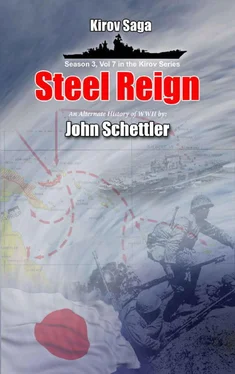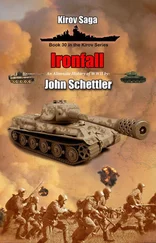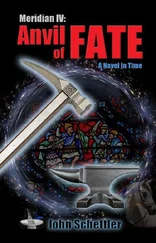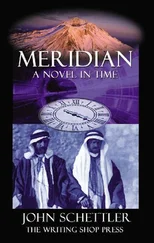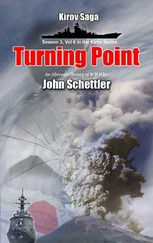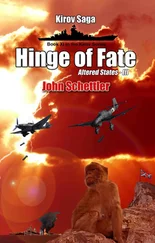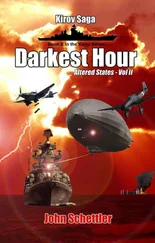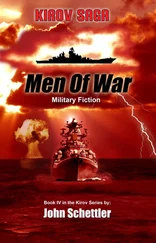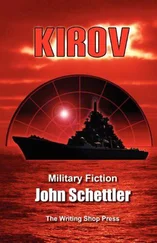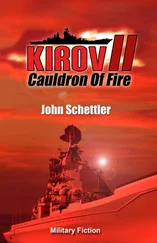Raeder would find a most interesting article a few pages on: ‘The Atomic Scientists Speak Up – Nuclear Physicists say there is no secrecy in Atomic Bomb and no defense against it.” He knew something of that, but said nothing. There was even an article with photographs near the end that featured the broken and bomb damaged statues of Berlin, which gave Raeder a shudder.
“Heinrich… You are suggesting that these documents and magazines may be authentic? Why, they would have to have come from…”
Heinrich did not finish the Admiral’s sentence, it simply wasn’t necessary. The photographs spoke their silent truth. Raeder took up the issue dated October of 1958. There, in the table of contents, was Montgomery’s portrait, led by a haunting quote from the English poet T.S. Eliot: “Time present and time past are both perhaps present in time future…”
It was going to be a very long night.
Hejoined the Verein für Raumschiffahrt , a society for space travel, at the ripe age of 17, to begin his first foray into rocket design in 1927. There he met Max Valier, who saw applications for rocketry in driving cars, trains, gliders and even snow sleds. By 1930, select members of the society had co-opted an abandoned ammo dump near Reinickendorf and saw it the perfect place to begin testing their designs. They called it the Raketenflugplatz , or Rocket Airfield, and their first major test model was called the Mirak-1, which used a mix of a liquid oxygen and gasoline. After one successful test, the second model exploded, sending the team back to the drawing board to consider a less volatile method of fuel.
Early variants designed by the group produced modest results, achieving altitudes of 200 feet and ranging no more than a kilometer. Eventually the altitude reached one mile, which was when the Army stepped in when the group approached it looking for funding and support. With an Army proving ground site available at Kummersdorf, the young Wernher Von Braun soon found himself working for the Army. There he met the famous Major von Richthofen and Ernst Heinkel, who wanted him to work on designs for rocket assisted aircraft.
Von Braun also helped developed the A-Series rockets, (A-1 and A-2) which he nicknamed Max and Moritz. It wasn’t until 1937 that a dedicated testing site was set up at a top secret underground location called Peenemünde on the Baltic coast. It started with the A-3 design improving on earlier models, but had little real support until a strange ship appeared and began flinging lethal rocket weapons at German Navy ships. Suddenly Hitler was all ears. He wanted to know everything possible about these rockets, how they worked, how they were guided to their targets, how far they could fly and what payload they might carry.
Soon von Braun found himself leading a team of very talented scientists, among them designer Walter Reidel, Rudolph Hermann conducting wind tunnel testing, Dr. Mader in materials, Dr. Ernst Steinhoff working on guidance and telemetry, Arthur Rudolph in the fabrication lab, Klaus Riedel conducting testing, and Hermann Steuding handling aeroballistics. Their designs were many: the Wasserfall and Schmetterling , The Waterfall and Butterfly, remote controlled AA rockets, Germany’s first attempts at building a functional SAM. The Taifun followed, conceived as a weapon that could be fired in massive waves against high flying Allied bombers.
These and other designs got support from Goring, who was also looking for an anti-aircraft rocket for the Luftwaffe, but Germany never really saw a development path leading to much success with them… until two mysterious rolling chassis were delivered to Peenemünde on the night of May 5, 1942. Von Braun was among the first to get a look at them, his eyes widened with delight and awe when he saw them.
“We’ll name them Max and Moritz,” he said with a grin, hearkening back to those early days of testing. They would become schoolmasters for the well educated minds who were now there to study them, and one day they would be twin terrors for the Allied cause. There, sitting on those horizontal carriages, were solutions to all the problems they had been muddling through. They had samples of materials, and engine design, for the X-17A was using three different engines made by Morton-Thiokol. They had the solid fuel propellant used in each engine, something that was not achieved in Fedorov’s history until 1948, and most of all, they had the design, noting the presence of two small rockets on the first stage that had been added to impart a desired spin on launch.
Beyond that, they had something in the nose of each missile that was truly perplexing—two fully functioning low yield atomic warheads. It would be many months before they could even begin to grasp the full magnitude of what they had before them, but in that time, the examples would serve to guide and instruct the entire German rocket program. The only dilemma von Braun and his cohorts faced was the fact that they could not see the missile actually fire without losing it forever. They could only probe, measure, analyze and speculate, and so their first effort would be to try and reverse engineer what they had in front of them by building their own models. To adequately achieve the same scale, they would need to first understand how the powerful solid fuel propellant was made.
Up until that time, most German rocket models had used volatile liquid fuel combinations of oxygen and alcohol, but this was something entirely different. By removing tiny samples for analysis, they determined that the oxidizer here was being embedded in a rubbery matrix that was cast right into the motor design as an integral part, much unlike a liquid fueled rocket that could be fueled on the launch pad. A solid propellant also produced a steady burn, which was much more difficult to throttle than a liquid fueled system, where the thrust could be determined by the amount of fuel being injected into the combustion chamber.
The German scientists quickly realized that once this rocket was ignited, it could not be shut down, which even prohibited a test firing of the engine to determine its thrust and characteristics. Once it was fired, it was lost forever as a working model.
‘Yet solid fuel has many advantages,” said von Braun, “particularly from a military standpoint. It is very dense, allowing us to get a lot of thrust from a very low volume of material, and that saves weight. It ignites immediately, requiring no pre-fueling operation prior to launch, which would be completely impractical on a ship. And my experience tells me the reliability of such fuel will be much better than liquid fuel, and the shelf life is indefinite. From a logistical standpoint, it is much to be desired in a rocket weapon for military use—no fuel trucks and supporting crews, quick deployment and firing, easy transportability.”
“But is this the weapon that struck our ships?” asked designer Walter Reidel. “Look, it clearly has three stages, the largest being that wider first stage. We have estimated the burn time on the volume of propellant there to be about two minutes. The other two stages, being much smaller and narrower in diameter, might burn for just a few seconds. From my perspective, I would say this design was intended to achieve very high altitudes, and very quickly if the first stage burns so fast.”
“Perhaps it is not the ship killer,” said Rudolph Hermann. “We are working on an exact model of the three stages for wind tunnel testing soon. This may be the anti-aircraft model—that is my suspicion.”
“The key will be to first replicate the solid fuel propellant,” said von Braun.
“We are only just beginning to understand its component chemistry,” said Dr. Mader. “We have identified acrylic acid, ammonium and potassium nitrates, perchlorates. The fuel is actually in granular form, embedded in a kind of rubber like asphalt, and these grains have a very specific shape to maximize burning characteristics.”
Читать дальше
